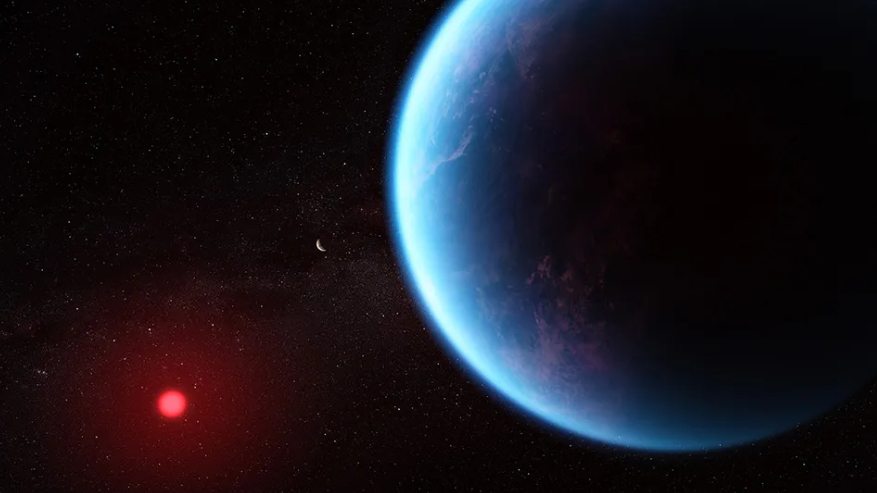(Al Jazeera Media Network) Astronomers have found the clearest evidence yet that life might exist beyond the solar system, from the atmosphere of a planet 124 light-years away from Earth, setting off rare excitement – tinged with caution – in the global scientific community.
Using the James Webb Space Telescope, researchers led by astronomers at the University of Cambridge in the United Kingdom have found chemical signatures of two compounds that on Earth are only produced by living creatures.
“These are the first hints we are seeing of an alien world that is possibly inhabited,” Nikku Madhusudhan, an astronomy professor at Cambridge and the lead researcher behind the discovery, told reporters at a media briefing on April 15. “This is a revolutionary moment.”
The researchers relied on data captured by NASA’s James Webb telescope, which was carried into outer space in 2022, and sits about 1.5 million kilometres away from Earth, as humanity’s watchtower peering into the universe.
They focused on one particular planet, K2-18b, because it had already shown promising signs as a candidate extraterrestrial body with conditions similar to those on Earth.
K2-18b lies in a constellation called Leo, and is so far away from Earth that a spaceship would need to travel for 124 years at the speed of light to get there. In reality, it would take much, much longer since the laws of physics don’t allow anything other than light to travel that fast.
The planet is 8.6 times heavier than Earth, and 2.6 times as large. Critically, it sits in what is known as the “Goldilocks Zone” of its sun: that’s the region around a star where a planet’s temperature could, in theory, support water in its liquid form on the surface.
In 2023, Cambridge astronomers found methane and carbon dioxide in the atmosphere of the planet.
That was the first time that carbon-based molecules had been discovered in the atmosphere of any planet in the habitable zone of its sun – the distance from a sun where it’s neither too hot, nor too cold, and so possible for life to survive. The scientists said that a surface covered first by an ocean, and then a hydrogen-rich atmosphere, would explain the presence of carbon-based molecules. Simply put, it was possible that the planet could have water.
Researchers have now found much harder evidence suggesting that the planet might not only have the conditions to host life – but could, at least in theory, be hosting life itself.
To explore planets light-years away from Earth, scientists wait for them to pass in front of their suns. They study the light from the suns as it streams through the atmospheres of these planets, searching for clues.
That’s how the team found traces of either dimethyl sulfide (DMS) or dimethyl disulfide (DMDS) – or both – in the atmosphere of K2-18b.
On Earth, these compounds are only produced by living beings, particularly microbes such as marine phytoplankton. What’s more, what the scientists found suggests that the concentration of these chemicals in the K2-18b atmosphere was thousands of times higher than on Earth.
“It was an incredible realisation seeing the results emerge and remain consistent throughout the extensive independent analyses and robustness tests,” said co-author Mans Holmberg, a researcher at the Space Telescope Science Institute in Baltimore, United States, in a media statement on the Cambridge University website.
The scientists published their findings in the peer-reviewed Astrophysical Journal Letters publication.
But that does not mean that the scientists have found irrefutable evidence of life. Far from it.
Madhusudhan acknowledged that it is possible that the traces of DMS and DMDS found in the atmosphere of K2-18b are the outcome of chemical phenomena that are as of now, unknown to humanity.
“It’s important that we are deeply sceptical of our own results, because it’s only by testing and testing again that we will be able to reach the point where we’re confident in them,” Madhusudhan said. “That’s how science has to work.”


